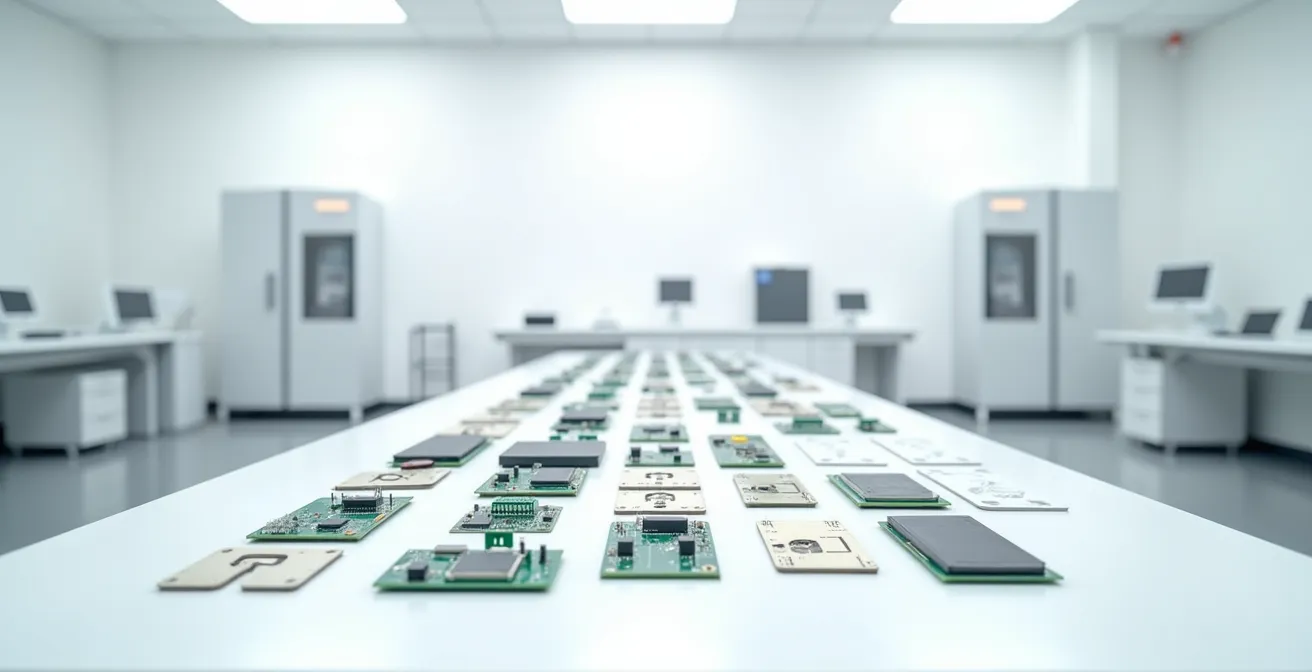
The conversation around sustainability in the technology sector often gravitates toward data center energy consumption and consumer electronics recycling. While important, these points only scratch the surface of a much deeper issue, particularly concerning the foundational backbone of our connected world. The future of telecom infrastructure is inextricably linked to a profound strategic shift, moving beyond simple operational efficiency to embrace a holistic vision of environmental and social responsibility. This evolution demands a rigorous re-evaluation of a device’s entire existence—from mineral extraction to end-of-life—transforming a linear model of production into a truly circular one.
This systemic change is no longer a peripheral concern but a central pillar for future growth and resilience. True sustainability requires interrogating the entire value chain, championing ethical sourcing, designing for longevity, and leveraging advanced connectivity not just to reduce its own footprint, but to actively accelerate decarbonization across all other industries. The networks of tomorrow must be built on principles that are as resilient and sustainable as they are powerful.
The Telecom Sustainability Blueprint in 4 Core Ideas
- Full Lifecycle Accountability: Moving beyond just operational energy use to assess the total environmental and social impact of hardware from raw material extraction to disposal.
- Connectivity as a Climate Solution: Leveraging networks like 5G and 6G to enable massive efficiency gains in other sectors, such as smart grids, logistics, and agriculture.
- Circular Economy by Design: Shifting from a “take-make-dispose” model to one focused on repair, refurbishment, and material recovery for all network components.
- Next-Generation Efficiency: Engineering future networks like 6G with sustainability as a core architectural principle to manage exponential data growth without a corresponding energy surge.
Assessing the true footprint: Lifecycle impacts and ethical sourcing in telecom infrastructure
To grasp the real environmental cost of connectivity, we must look beyond the electricity consumed during operation. A comprehensive Lifecycle Assessment (LCA) provides a complete picture by evaluating the impact of components like fiber optic cables, base stations, and data center hardware at every stage. This analysis begins with the extraction of raw materials—including rare earth minerals and metals—and scrutinizes the environmental degradation and social issues often linked to these supply chains. Globally, the ICT sector’s carbon footprint represents approximately 1.4% of global emissions, a figure that underscores the urgency of a more accountable approach.
Adopting rigorous, transparent assessments allows organizations to identify the highest-impact phases and prioritize interventions. This shift is leading to the adoption of emerging global standards and frameworks that promote sustainable and ethical material sourcing, pushing the industry toward greater accountability from mine to modem.
Ericsson’s Lifecycle Assessment Framework for Network Equipment
Ericsson implemented a comprehensive lifecycle assessment (LCA) methodology to evaluate environmental impacts across all stages of network equipment—from raw material extraction through manufacturing, transportation, operational use, and end-of-life disposal. A study using this method revealed that approximately 85% of total carbon emissions occur during the operational phase, while raw material extraction and manufacturing account for 10-12%. This insight led Ericsson to prioritize energy-efficient design and renewable energy sourcing for data centers. The framework now guides product development decisions and has resulted in a 35% reduction in energy consumption per unit of data transmitted since 2015.
Implementing ethical sourcing requires a structured, proactive approach. To guide this complex process, leading organizations have developed clear, actionable frameworks.
Steps for Implementing Ethical Sourcing in Telecom Supply Chains
- Conduct a comprehensive supply chain mapping exercise to identify all sources of critical raw materials, including rare earth elements, cobalt, and lithium used in network equipment.
- Establish partnerships with certified suppliers who adhere to internationally recognized standards such as the Responsible Minerals Initiative (RMI) and OECD Due Diligence Guidance.
- Implement third-party auditing mechanisms to verify ethical sourcing practices, including worker safety conditions, environmental protections, and community impact assessments at mining sites.
- Develop supplier diversity programs that prioritize procurement from suppliers with strong environmental, social, and governance (ESG) performance metrics.
- Create transparency reports that disclose sourcing origins and establish traceability systems using blockchain or digital product passports for key components.
Telecom as an accelerator: Enabling global sustainability goals through advanced connectivity
While reducing its own footprint is critical, the telecommunications sector’s greatest contribution to sustainability may be its role as an enabler for other industries. Advanced connectivity is the nervous system for a smarter, more efficient global economy. It is fundamental to the management of smart grids, facilitating the integration of renewable energy sources and enabling dynamic demand-response systems that prevent energy waste. It’s estimated that ICT technologies could enable a 15% reduction in global carbon emissions by 2030, primarily by optimizing other sectors.
How does connectivity reduce emissions in other industries?
By enabling real-time data analysis and control, telecom infrastructure allows industries to optimize resource use. This includes reducing fuel consumption in logistics, minimizing water and pesticide use in precision agriculture, and cutting energy waste in smart buildings and manufacturing.
Furthermore, ubiquitous connectivity is revolutionizing logistics and supply chains, optimizing routes to reduce fuel consumption and associated emissions. In fields like agriculture and manufacturing, IoT sensors and data analytics drive unprecedented resource efficiency. As networks evolve with edge computing and 5G/6G capabilities, they will unlock new potential for real-time environmental monitoring, predictive maintenance to prevent industrial failures, and coordinated disaster response.

This technological backbone is what allows smart systems to function at scale. From managing city-wide energy grids to optimizing a single farmer’s irrigation schedule, the low latency and high throughput of modern networks provide the instant feedback necessary for impactful sustainability applications.
The performance metrics of 5G networks are specifically tailored to support these diverse and demanding sustainability-focused applications, showcasing the direct link between network capability and environmental benefit.
| Application Domain | Latency Requirement | Data Throughput | Energy Efficiency Gain |
|---|---|---|---|
| Smart Grid Management | <10 ms | 10-50 Mbps | 25-35% reduction in grid losses |
| Precision Agriculture | <50 ms | 5-20 Mbps | 30-40% water savings |
| Fleet Logistics Optimization | <20 ms | 20-100 Mbps | 15-20% fuel consumption reduction |
| Industrial IoT Monitoring | <5 ms | 50-200 Mbps | 20-30% energy efficiency improvement |
| Environmental Sensor Networks | <100 ms | 1-10 Mbps | Real-time monitoring enabling 40% faster response |
Future-proofing networks: Sustainability paradigms for 6G and beyond
As the world prepares for the next wave of connectivity, sustainability can no longer be an afterthought—it must be a foundational design principle. The projected energy demands of 6G architecture, designed to handle exponentially more data, present a significant environmental challenge if not managed proactively. The goal is to decouple data growth from energy consumption, a task that requires a complete paradigm shift in network design and one of the most exciting advancements in network technology.
6G networks must be designed with sustainability as a foundational principle, not an afterthought. We anticipate that 6G will need to deliver 100 times the energy efficiency of 5G while supporting exponentially greater data volumes. This requires a fundamental reimagining of network architecture, moving toward AI-native designs that can dynamically optimize energy consumption at the hardware, protocol, and application layers simultaneously.
– Dr. Mischa Dohler, IEEE Communications Magazine
Innovations are already underway to achieve this. Researchers are exploring radical improvements in spectral efficiency, developing AI-driven network orchestration that predicts traffic and powers down components in milliseconds, and designing novel hardware that consumes minimal power. The ambition is immense, as projections show that 6G technologies aim to achieve 10-100 times greater energy efficiency per transmitted bit compared to 5G. A critical component of this future is ensuring that these sustainable technologies are accessible globally, preventing a “green digital divide” between developed and developing markets.
Achieving this level of efficiency requires a multi-layered architectural strategy, integrating artificial intelligence and modular design from the ground up.
Key Design Principles for Sustainable 6G Architecture
- Integrate AI-driven network orchestration at the architectural level to enable real-time, predictive energy management that anticipates traffic patterns and dynamically allocates resources to minimize power consumption.
- Implement ultra-massive MIMO (Multiple Input Multiple Output) antenna systems with advanced beamforming to concentrate signal energy precisely where needed, reducing broadcast power requirements by 60-70%.
- Deploy distributed edge computing nodes to process data closer to end users, dramatically reducing data transmission distances and associated energy costs while improving latency.
- Design modular, software-defined hardware platforms that allow for incremental upgrades and component replacement without replacing entire base stations, extending infrastructure lifespan to 15-20 years.
- Establish energy harvesting capabilities using ambient sources such as solar panels integrated into base station designs and piezoelectric materials in urban antenna installations.
- Create network slicing architectures that allocate bandwidth and power resources based on application priority, ensuring mission-critical sustainability applications receive preferential treatment.
Key takeaways
- True telecom sustainability requires assessing the full lifecycle of hardware, from mining to end-of-life management.
- Advanced networks are powerful enablers, helping other industries significantly reduce their own carbon footprints.
- Future 6G networks are being designed with hyper-efficiency as a core principle to manage data growth responsibly.
- The circular economy is crucial, focusing on repair, refurbishment, and reuse to minimize e-waste and conserve resources.
Championing the circular economy: Innovative strategies for telecom infrastructure longevity and reuse
The traditional linear model of “take, make, dispose” is a primary driver of environmental strain and is particularly wasteful in the technology sector. In 2022 alone, the telecommunications sector generated approximately 5.3 million tonnes of electronic waste. Championing a circular economy is the most effective antidote. This approach moves beyond basic recycling to prioritize strategies that extend the life of hardware, such as advanced material recovery, component refurbishment, and innovative business models like Product-as-a-Service (PaaS), where equipment is leased rather than sold.
This shift begins at the drawing board. By integrating principles of “design for disassembly” and modularity, manufacturers can create equipment that is easier to repair, upgrade, and manage at its end-of-life. This not only reduces waste but also creates new economic opportunities in refurbishment and secondary markets. Emerging technologies like digital product passports and blockchain are set to revolutionize this space by creating a transparent and verifiable record of a product’s materials and lifecycle, fostering trust and efficiency in the circular value chain. For companies looking to optimize their operations and focus on these core sustainable strategies, it’s beneficial to Explore IT outsourcing benefits.

The organized, systematic layout of modular components showcases a strategic approach to hardware design. This philosophy ensures that individual parts can be easily accessed, replaced, or upgraded, fundamentally extending the lifespan of the entire infrastructure and minimizing electronic waste. This is the circular economy in practice.
Nokia’s Circular Economy Program for Network Infrastructure
Nokia launched a comprehensive circular economy initiative in 2021 targeting end-of-life network equipment. The program established take-back schemes across 50 countries, collecting decommissioned base stations, routers, and radio units. Through advanced sorting and refurbishment facilities, Nokia achieved an 85% material recovery rate, with 60% of components being refurbished for reuse and 25% recycled for raw materials. Critical achievements include: extending the operational life of refurbished equipment by 5-7 years through component-level repairs, recovering rare earth elements from circuit boards with 95% efficiency, and implementing a product-as-a-service model where customers lease rather than purchase equipment, ensuring proper end-of-life management. The program reduced new manufacturing demand by 30% for participating operators while cutting carbon emissions by approximately 2.3 million tonnes CO₂e over three years.
Frequently asked questions on sustainable telecom
What is the difference between recycling and circular economy in telecommunications?
Recycling focuses on processing waste materials into new raw materials at end-of-life, typically as a final step. A circular economy approach is far more comprehensive—it redesigns products and systems from the outset to eliminate waste, prioritizing strategies like repair, refurbishment, and component reuse before materials are recycled. In telecom, this means designing modular base stations where individual components can be upgraded or replaced without discarding entire units, implementing take-back programs, and creating secondary markets for refurbished equipment.
How do digital product passports support circular economy in telecom infrastructure?
Digital product passports (DPPs) are comprehensive digital records that accompany telecom equipment throughout its lifecycle. They contain detailed information about materials, components, manufacturing origin, repair history, and disassembly instructions. DPPs enable repair technicians to quickly identify which components can be replaced, help recyclers understand material composition for efficient recovery, and create transparency for regulators and customers. Blockchain-based DPPs ensure data integrity and enable tracking of components across multiple use cycles, making circular business models economically viable.
What are the main barriers to implementing circular economy practices in telecom?
Key barriers include: 1) Rapid technological obsolescence creating perceived incompatibility between old and new systems, 2) Lack of standardization across manufacturers making cross-brand component reuse difficult, 3) Economic models that incentivize new equipment sales over refurbishment, 4) Limited reverse logistics infrastructure for collecting end-of-life equipment, especially in developing markets, 5) Regulatory frameworks that don’t recognize or incentivize circular practices, and 6) Concerns about performance and reliability of refurbished components. Addressing these requires industry collaboration, policy innovation, and business model transformation.
Can refurbished telecom equipment match the performance of new equipment?
High-quality refurbished equipment can deliver performance that is virtually indistinguishable from new equipment. Professional refurbishment involves comprehensive testing, replacement of worn components, firmware updates, and certification processes that restore equipment to original specifications. Many manufacturers now offer warranties on refurbished equipment comparable to new products. The key is implementing rigorous quality control standards. Studies show that properly refurbished base stations and network equipment can operate reliably for 5-7 additional years, with failure rates within 1-2% of new equipment, while reducing carbon footprint by 60-70% compared to new manufacturing.